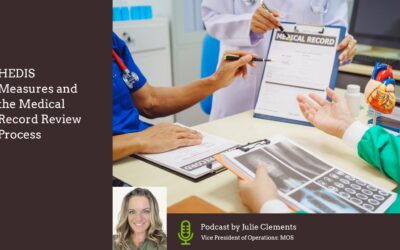Welcome to our podcast series where we dive deep into the world of medical record review, healthcare documentation, and quality assurance. Regardless of whether you’re a provider, administrator, or industry professional, this show is designed to keep you informed about the best practices, common pitfalls, and emerging trends in medical documentation and compliance.
In today’s episode, our host Cassidy Case addresses one of the underrated, yet frequent issues that still persists in the healthcare industry – poor quality of medical records. Ms. Case analyzes the most common issues related to poor-quality medical records, how to fix them and reduce issues going ahead.
Podcast Highlights
00:34 – Why High-quality Medical Records Matter
01:14 – What’s Going Wrong?
01:47 – How Do We Fix It?
02:48 – Final Thoughts
Poor Quality Medical Records – Reasons and Solutions to Address Them
Read Transcript
Hello everyone!
Welcome to another episode of our podcast series, where we discuss topics related to medical record review, healthcare quality and everything in between. I’m your host, Cassidy Case and today, we’d be discussing an essential aspect of healthcare operations: the quality of medical records.
Poor documentation not only leads to administrative setbacks, but it can also affect patient safety, legal defense, and reimbursement accuracy. So, why do poor-quality medical records still exist in today’s tech-enabled world, and what can be done to fix them?
00:34 – Why High-quality Medical Records Matter
Medical records aren’t just files; they’re the backbone of patient care. They capture everything from diagnoses and treatments to medications and provider notes.
The benefits of high-quality documentation are:
One, Effective Patient Care. It allows providers to make informed treatment decisions.
Two, Legal Protection. These documents act as solid evidence in malpractice cases or audits.
Three, Billing Accuracy. They ensure correct coding, leading to maximum reimbursement.
And four, Regulatory Compliance, especially with HIPAA and other healthcare standards.
01:14 – What’s Going Wrong?
Despite all this, poor-quality records persist due to several key reasons:
- Human Error – When you think of manual errors; think typos, skipped/missed fields, or even illegible handwriting.
- Lack of Training – Many providers don’t get the documentation guidance they truly are looking for.
- Complex EHR Systems – Some digital platforms can be intimidating in terms of UI/UX and create more confusion than clarity.
- Time Constraints – Doctors and nurses are often too busy with their core tasks, with little time to document thoroughly.
01:47 – How Do We Fix It?
Fortunately, there are actionable steps that can dramatically improve record quality:
Number one, invest in training. Providers need regular updates on EHR usage, terminology, and compliance.
Two, simplify EHR workflows. Collaborate with tech providers to make systems user-friendly and aligned with your existing workflow.
Three, deploy automation tools. AI can be of help in streamlining redundant tasks like documentation, thereby reducing errors and saving time.
Four, perform regular audits. In doing so, it can help catch issues early and foster accountability.
Five, allocate documentation time. It is important to give providers breathing room – or delegate to support staff – to ensure accurate entries.
And finally, enable seamless data sharing. Systems like PCMH or ACOs centralize patient data to minimize fragmentation and inconsistencies.
02:48 – Final Thoughts
Accurate and organized medical records aren’t just nice to have — they’re inevitable. Whether it’s delivering top-notch patient care or ensuring your practice stands strong in audits or claims reviews, it all starts with quality documentation.
Thanks for tuning in today! I’m Cassidy Case, and until next time, stay informed, stay compliant, and remember: the integrity of your records defines the integrity of your care. Sayonara!
Disclaimer: This podcast features human-written content, narrated using AI-generated voice. This is intended for informational purposes.



